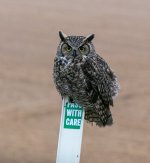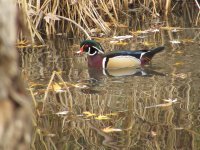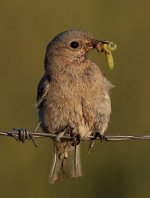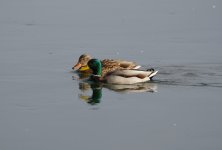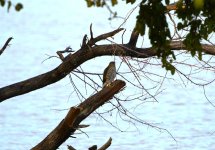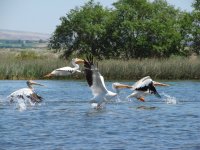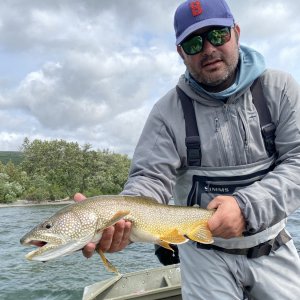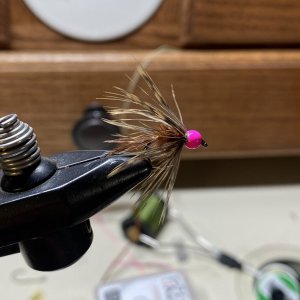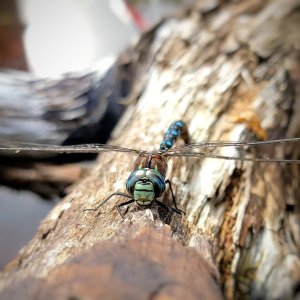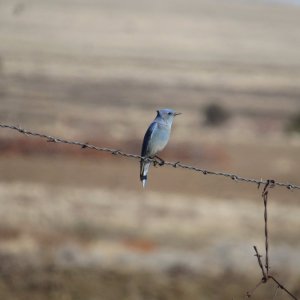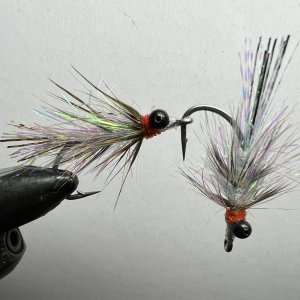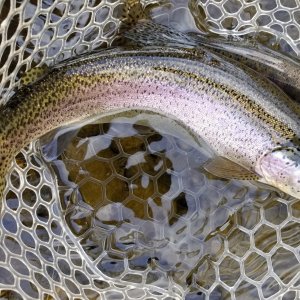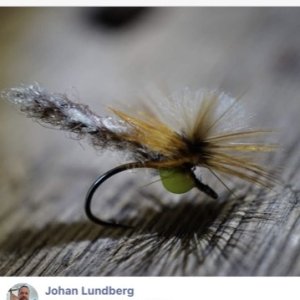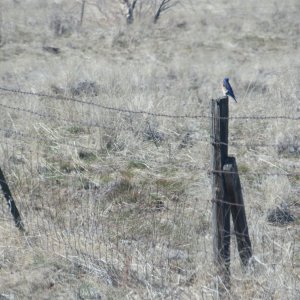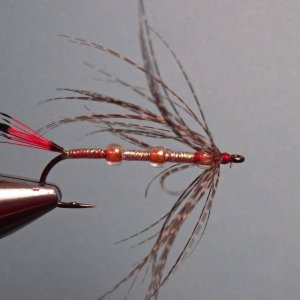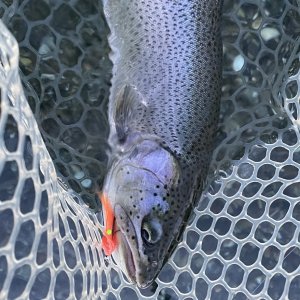No pictures - this morning I heard hooting outside my tying room window. I went outside and could see an owl silhouetted from downtown city lights, the bird was roosting on a powerpole cross arm. I could hear another owl responding but couldn't see it. The noise got louder, I went outside and both owls were in the walnut tree 20-feet from the window. Pre-dawn, I wish I could have gotten a photograph. I'm wondering where they roost and what kind of owls they were. Very cool!
You are using an out of date browser. It may not display this or other websites correctly.
You should upgrade or use an alternative browser.
You should upgrade or use an alternative browser.
Got any bird pics?
- Thread starter Wadin' Boot
- Start date
Jim F.
Still a Genuine Montana Fossil
There was a Great Horned Owl in the Cottonwood behind me a couple nights ago. I shut-off the motion lights, slipped outside and we had a 20 minute conversation. GH Owls can make a variety of calls, but hooting is typically a locating call.
This is a pretty good video of their calls.
This is a pretty good video of their calls.
Last edited:
White-crowned sparrows are very striking birds. The adult birds have contrasting white and black stripes on the crowns of their heads
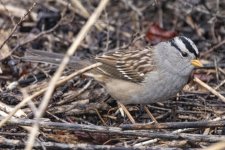
and immatures have more muted gray and rusty-brown stripes on their heads.
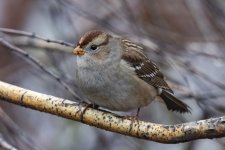
The crowns of males are more vivid that those of females and the vividness of crowns varies among individuals within a sex/age group.
As part of their winter flocks, birds battle for access to food (especially at feeders). Adults dominate immatures (first-year birds) in these conflicts. Adult males are dominant to adult females and immature males dominate immature females (see here and here). Within a group, birds with more striking patterns typically dominate individuals that are more muted (and these social signals are associated with features linked to evolutionary superiority - see here). But if you paint the crown of a less-dominant bird to imitate a more dominant stage, the formerly subdominant bird wins these scraps more often. Of course, an “upgraded” bird cannot see the top of its own head, so this altered outcome must be due to the perception of the other bird that its “upgraded” antagonist must be a more dominant bird. [The scientist who conducted this research was a fellow gradual student at U.C.S.B.]. Similar patterns are found in a related species, golden-crowned sparrows, but there is also evidence that birds learn to recognize the members of their flock and manipulating the crown coloration is not effective with birds that have prior experience with each other (but it does still work with inexperienced birds).
Steve

and immatures have more muted gray and rusty-brown stripes on their heads.

The crowns of males are more vivid that those of females and the vividness of crowns varies among individuals within a sex/age group.
As part of their winter flocks, birds battle for access to food (especially at feeders). Adults dominate immatures (first-year birds) in these conflicts. Adult males are dominant to adult females and immature males dominate immature females (see here and here). Within a group, birds with more striking patterns typically dominate individuals that are more muted (and these social signals are associated with features linked to evolutionary superiority - see here). But if you paint the crown of a less-dominant bird to imitate a more dominant stage, the formerly subdominant bird wins these scraps more often. Of course, an “upgraded” bird cannot see the top of its own head, so this altered outcome must be due to the perception of the other bird that its “upgraded” antagonist must be a more dominant bird. [The scientist who conducted this research was a fellow gradual student at U.C.S.B.]. Similar patterns are found in a related species, golden-crowned sparrows, but there is also evidence that birds learn to recognize the members of their flock and manipulating the crown coloration is not effective with birds that have prior experience with each other (but it does still work with inexperienced birds).
Steve
There was a Great Horned Owl in the Cottonwood behind me a couple nights ago. I shut-off the motion lights, slipped outside and we had a 20 minute conversation. GH Owls can make a variety of calls, but hooting is typically a locating call.
This is a pretty good video of their calls.
Jim -
Thanks for sharing this link. Although I didn't hear a lot of variation in the "hoots", I could clearly see "horns" in the silhouette so I guess I had a pair of great horned owls. That's very cool! The link you provided says these owls prey on, among other things, squirrels (high five!!) and raccoons which makes me wonder if they might prey on domestic cats? A neighbor's cat went missing, we wondered if someone adopted the cat (very friendly cat) or maybe a coyote got it. Or?
A cat that is no larger than a common cottontail rabbit would probably look like prey to a GH owl. However I think that most cats that go missing are taken by coyotes. We have coyotes almost daily around here, and people are always posting signs about missing cats.
Bass-O-Matic
Life of the Party
Bass-O-Matic
Life of the Party
On a recent trip to the Billie Frank Jr. Nisqually Wildlife Refuge, I had a great opportunity to get up close with a barred owl. It was perched in a tree just off the start of the boardwalk that runs between the western barn and a drainage canal. It hadn’t been there earlier in the morning, but I was alerted to its presence by another birder. When I arrived, there were several folks taking pictures with everything from telephoto-equipped cameras to cell phones. It was unconcerned by the presence of five or six onlookers. From my position on the boardwalk, the bird was just 20 feet away; I dropped the magnification on my telephoto lens just to have the whole bird in the frame.
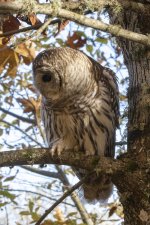
I had only managed to take one or two pictures before the bird flew down into the pile of leaves on the ground still about 20 feet away. It had spread its wings a hawks and falcons often do to cover their prey from prying eyes.
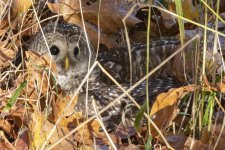
The owl jabbed its bill down once or twice into the leaves by its legs and then pulled up a small garter snake.
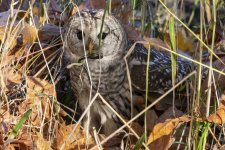
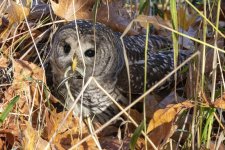
It repositioned the snake a few times in its bill before it swallowed the snake like linguini.
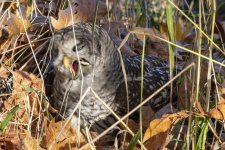
It then flew back to its perch in the tree.
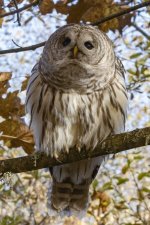
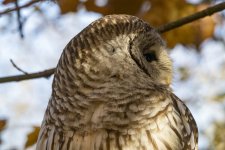
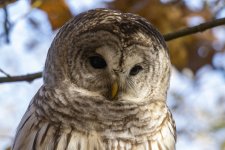
While perched, it looked around and later cleaned its foot.
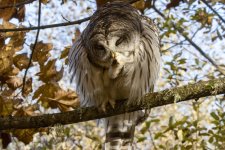
Very cool.
Steve

I had only managed to take one or two pictures before the bird flew down into the pile of leaves on the ground still about 20 feet away. It had spread its wings a hawks and falcons often do to cover their prey from prying eyes.

The owl jabbed its bill down once or twice into the leaves by its legs and then pulled up a small garter snake.


It repositioned the snake a few times in its bill before it swallowed the snake like linguini.

It then flew back to its perch in the tree.



While perched, it looked around and later cleaned its foot.

Very cool.
Steve
Covering prey with the wings is called mantling.
Very nice pictures!
We have had barred owls land on the metal feeder support
Very nice pictures!
We have had barred owls land on the metal feeder support
Nice owl shots Steve!
shooting from the kayak, sometimes you get wave effects that make the photo look like straight up bad photoshop. Normally this happens when I am taking a shot and a boat wake comes through. With the wave action, out of focus pylons + telephoto the shadows and wave peak vs trough vs refracted wave from shore get all distorted and can make the photo look super fake....example below
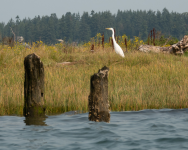
shooting from the kayak, sometimes you get wave effects that make the photo look like straight up bad photoshop. Normally this happens when I am taking a shot and a boat wake comes through. With the wave action, out of focus pylons + telephoto the shadows and wave peak vs trough vs refracted wave from shore get all distorted and can make the photo look super fake....example below

This image was taken from my office desk at Shasta Valley Wildlife Area in Northern California back when I was employed. We had a small pond in front of the office and you just never knew what was going to pop up. In this case, it was a courting male Wilson's snipe perched on our rain gauge fence post. I think snipe are so cool - the males (occasionally females) perform an elaborate courtship display known as winnowing. As they circle and dive over their breeding territory, air rushes through the outspread tail feathers, creating this weird, spooky "whoop whoop whoop" sound. To me, winnowing snipe are a surefire sign of spring.
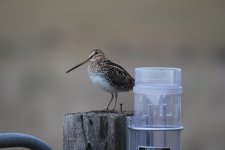

Last edited:
Jim F.
Still a Genuine Montana Fossil
Amazing flyers . . . hard to believe that they don't crash as erratically and fast as they fly.Wilson's snipe
"What a wondrous bird is the Pelican. It's bill can hold more than it's belly can."And we wonder what's happening to the carp on this flat?
Amazing flyers . . . hard to believe that they don't crash as erratically and fast as they fly.
"What a wondrous bird is the Pelican. It's bill can hold more than it's belly can."
I couldn't agree more! Back during my bird hunting days, I found snipe to be the ultimate challenge and one that I mostly failed at.

